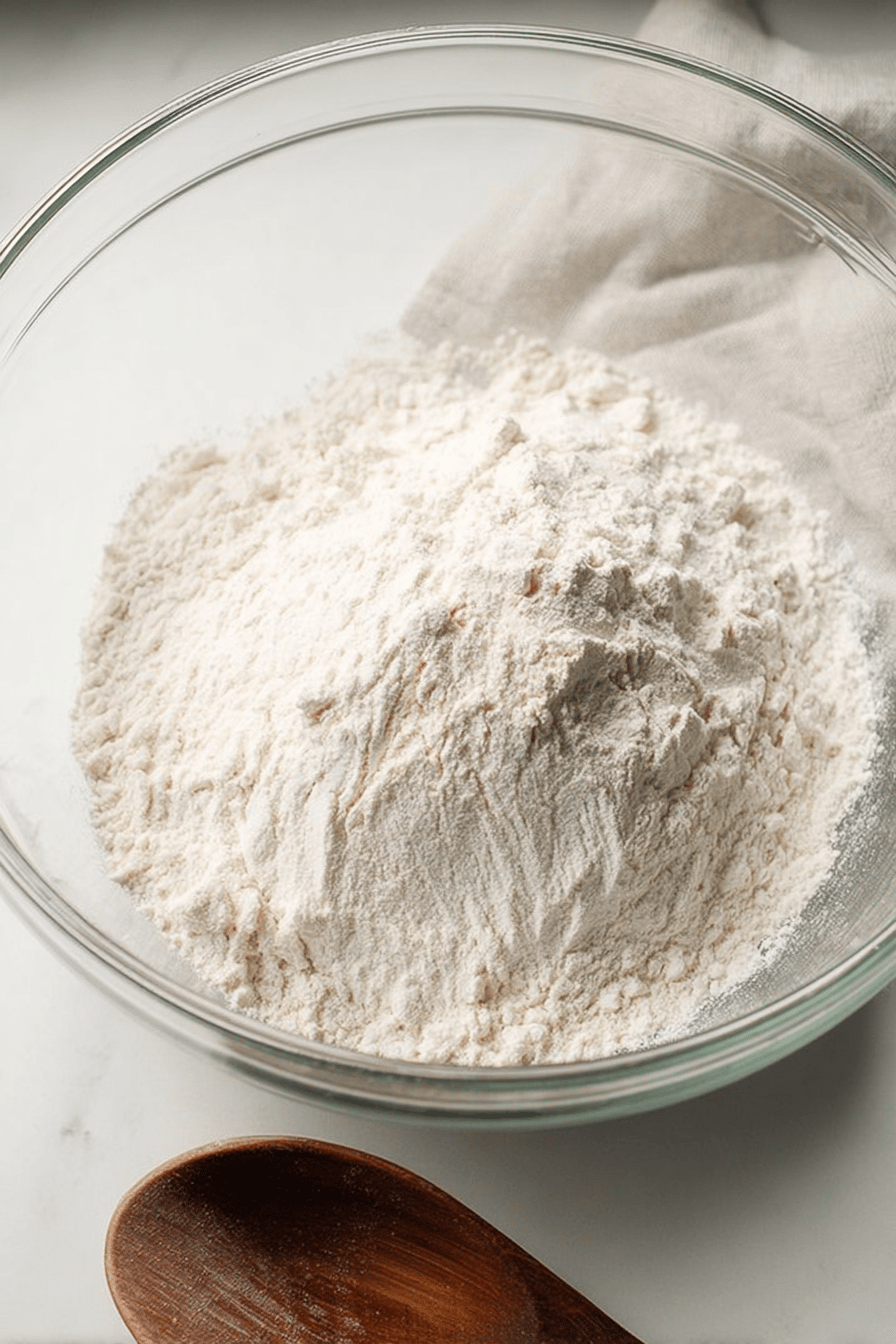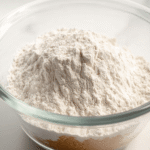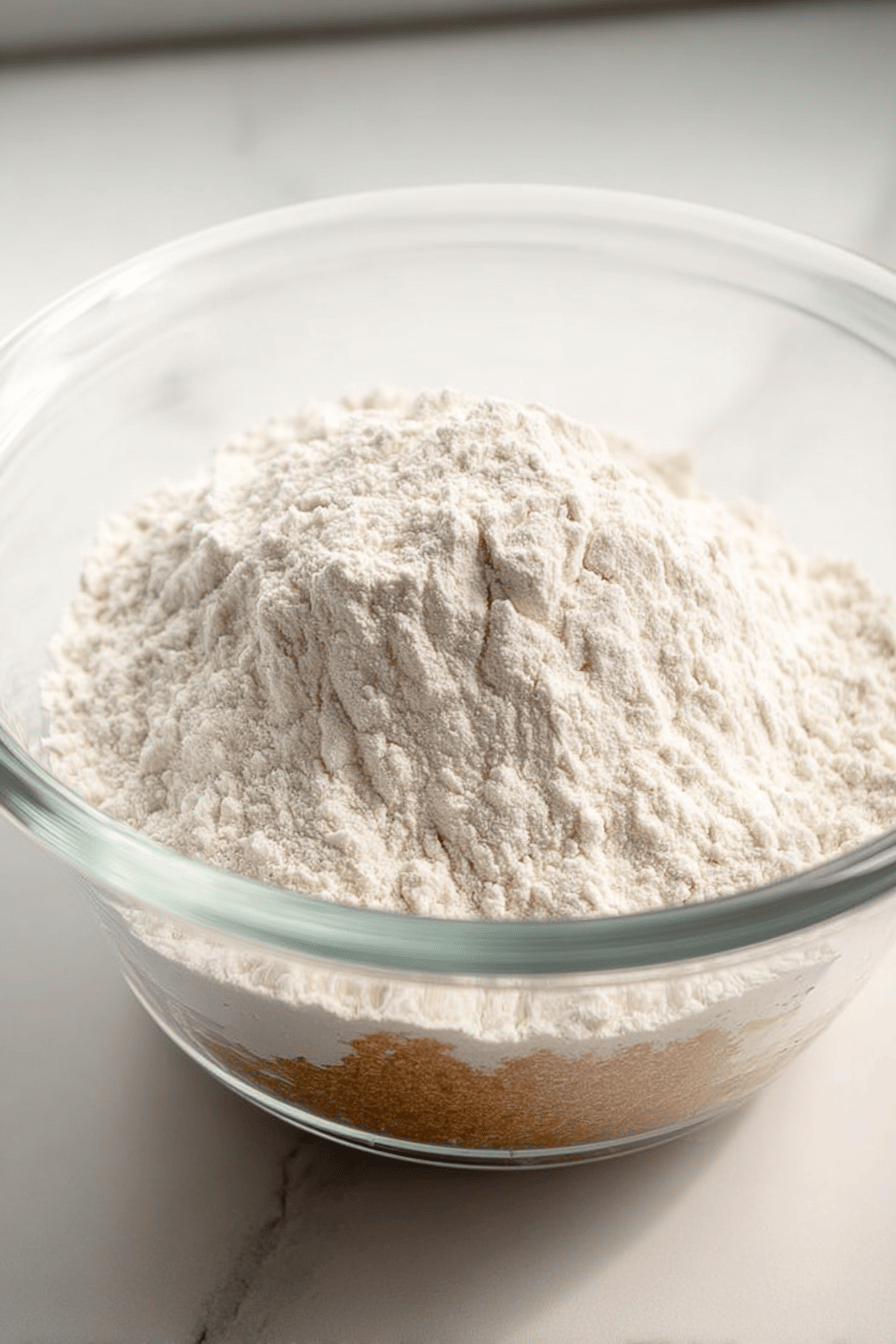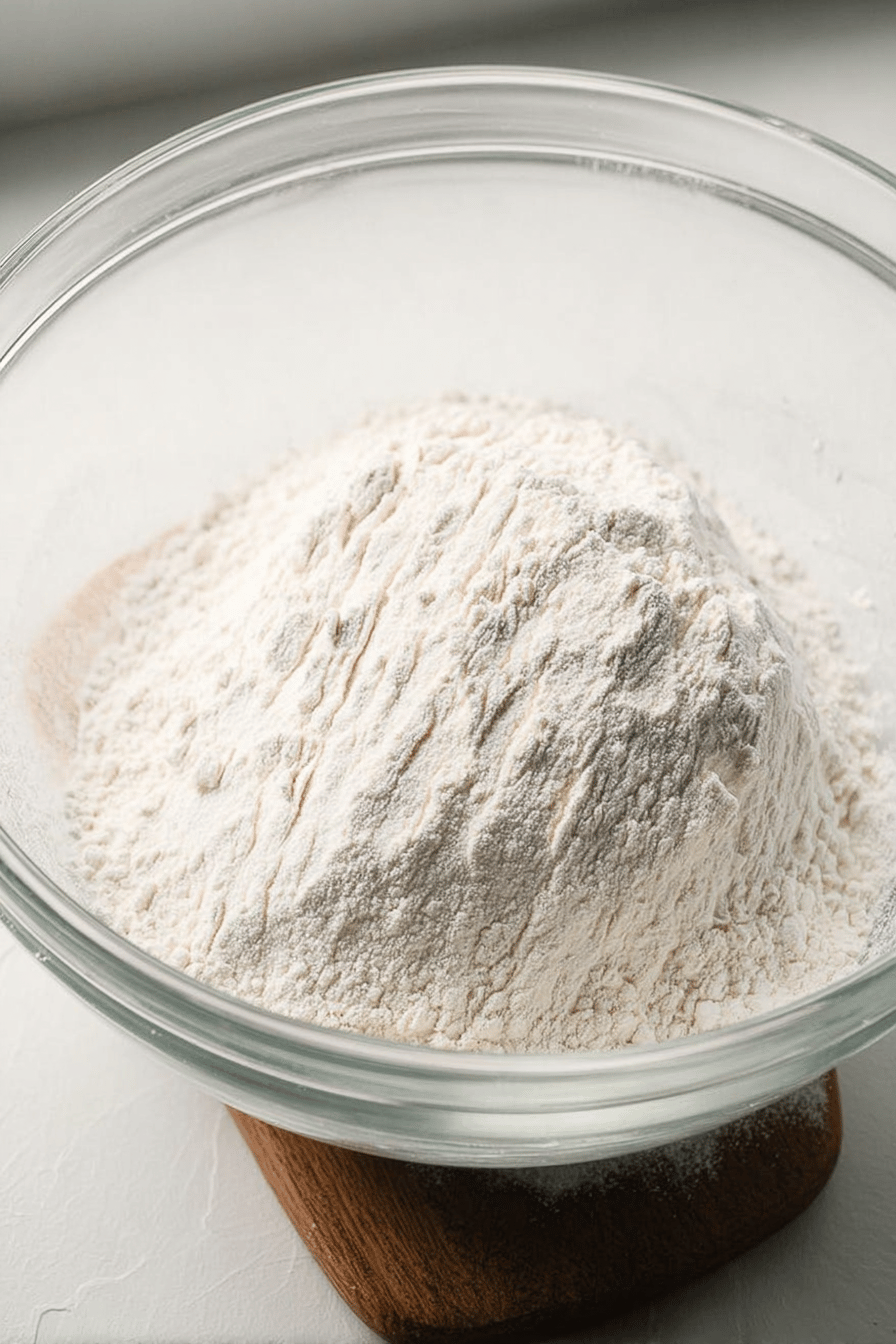Why You’ll Love This Cake Flour
This cake flour substitute recipe brings joy to home bakers by offering a simple way to whip up light and fluffy treats right from your kitchen. It stands out for its ease of preparation, which makes baking fun without overwhelming anyone new to the craft. Plus, it uses everyday ingredients that you likely have on hand, making it a go-to choice for everything from basic cupcakes to more elaborate desserts.
Health benefits come into play because this mix promotes wellness with fewer additives and options for lower fat content. You’ll appreciate how versatile it is, fitting into various dietary preferences to suit busy parents, students, or baking enthusiasts. What really sets this cake flour apart is the tender, moist texture it creates in your baked goods, turning every recipe into a memorable experience around the table.
- Ease of preparation: This cake flour recipe is designed for simplicity and quick cooking time, allowing even beginner bakers to achieve perfect results without fuss or complicated steps.
- Health benefits: Made with carefully selected ingredients, this cake flour offers nutritional advantages such as lower fat content and fewer additives, promoting wellness while maintaining delicious flavor.
- Versatility: Adaptable to various dietary needs, this cake flour can be used in vegan, gluten-free, or low-calorie recipes, ensuring everyone can enjoy it regardless of preference.
- Distinctive flavor: The unique taste profile enhances baked goods, creating moist, tender textures and a subtle richness that beats standard flours.
To make things even better, this homemade cake flour substitute helps reduce gluten formation, leading to those fluffy results we all love in cakes. For instance, when you sift together 14 tablespoons of all-purpose flour and 2 tablespoons of cornstarch twice, you get a mixture that’s aerated and ready for use. In regions where cornstarch is called corn flour, you can swap in arrowroot powder if needed, keeping your baking straightforward and effective.
Jump To
- 1. Why You’ll Love This Cake Flour
- 2. Essential Ingredients for Cake Flour
- 3. How to Prepare the Perfect Cake Flour: Step-by-Step Guide
- 4. Dietary Substitutions to Customize Your Cake Flour
- 5. Mastering Cake Flour: Advanced Tips and Variations
- 6. How to Store Cake Flour: Best Practices
- 7. FAQs: Frequently Asked Questions About Cake Flour
- 8. Cake Flour
Essential Ingredients for Cake Flour
Gathering the right ingredients is key to making a reliable cake flour substitute that works wonders in your recipes. This section focuses on the main components needed, ensuring you have everything measured out for success. By blending these items properly, you’ll mimic the fine texture of real cake flour, perfect for achieving soft and tender bakes.
Main Ingredients
Here is a structured list of the essential ingredients for this cake flour substitute. I’ve pulled these directly from the details you provided to make sure everything is clear and precise:
- 14 tablespoons all-purpose flour – Forms the base of the substitute to provide structure.
- 2 tablespoons cornstarch – Helps lighten the mixture and reduce gluten for a fluffy result.
Remember, you sift these together twice in a large bowl to mix and aerate thoroughly, then measure out 1 cup for your recipe. If you need more, prepare separate batches to keep things accurate.
Special Dietary Options
Don’t forget about adaptations for different needs, as this cake flour substitute can easily fit into various lifestyles. For example, if you’re aiming for a gluten-free version, consider using a gluten-free flour blend in place of all-purpose flour. This way, busy parents or diet-conscious individuals can still enjoy light cakes without worry.
| Ingredient Category | Standard Option | Dietary Alternative |
|---|---|---|
| Base Flour | 2 cups all-purpose flour | Gluten-free flour blend |
| Lightening Agent | 2 tablespoons cornstarch | Arrowroot powder |
| Rising Agent | 1/2 teaspoon baking powder | Use in vegan recipes with applesauce for moisture |
| Flavor Enhancer | 1/4 teaspoon salt | Adjust for low-sodium diets |
This table makes it easy to see substitutions at a glance, helping you customize based on what you have. Cornstarch, or corn flour in some areas, plays a big role in making your homemade cake flour work just like the real thing.
How to Prepare the Perfect Cake Flour: Step-by-Step Guide
Creating your own cake flour substitute is a breeze and takes about 2 minutes, making it ideal for when you’re in a hurry. Start by pulling together your ingredients to ensure smooth sailing through the process. This method focuses on sifting and mixing to get that airy texture perfect for baking.
Gather and Measure
First, make sure you have all your tools ready, like a large bowl and a sifter. Accurate measurements are crucial, so measure out 14 tablespoons of all-purpose flour and 2 tablespoons of cornstarch exactly as listed.
- Gather all ingredients and equipment, ensuring you have accurate measurements ready for seamless preparation.
- Sift the all-purpose flour and cornstarch together twice to evenly distribute and remove lumps, just like in the instructions for this substitute.
- Whisk or mix the dry ingredients thoroughly to maintain uniform consistency for better batter texture.
- For vegan adaptations, replace with suitable options like applesauce for moisture.
- Combine wet ingredients separately before folding into the dry mix to prevent overmixing and achieve a tender crumb.
- Pour batter into prepared pans and bake at 350°F (175°C) for 25-30 minutes or until a toothpick comes out clean.
- Allow the cake to cool completely before adding frosting, giving flavors time to develop fully.
This step-by-step approach incorporates the cornstarch to reduce gluten, mimicking real cake flour for fluffy results. For delicate cakes, stick to genuine cake flour if possible, but this substitute works well in many cases.
Dietary Substitutions to Customize Your Cake Flour
Adapting your cake flour substitute to fit different diets is simple and helps everyone join in the fun. Whether you’re catering to vegan needs or gluten sensitivities, small changes can make a big difference. Start by considering protein alternatives that keep your bakes light and tasty.
- Use flaxseed meal or chia seeds mixed with water as egg substitutes for vegan diets to add moisture without eggs.
- Replace all-purpose flour with almond, coconut, or gluten-free blends to handle gluten issues easily.
For vegetable and seasoning tweaks, think about adding purees for extra nutrition. Arrowroot powder can serve as an alternative to cornstarch in some regions, keeping things versatile for food enthusiasts and travelers.
Vegetable and Sauce Ideas
Incorporate items like zucchini or pumpkin purees to boost moisture and flavor in your recipes. Use dairy-free milk such as almond milk for those with lactose intolerance, ensuring your homemade cake flour stays inclusive.
Mastering Cake Flour: Advanced Tips and Variations
Once you’re comfortable with the basics, try some advanced techniques to elevate your baking game. Sifting flour multiple times ensures maximum lightness, which is key for recipes like homemade cake flour substitute. Room temperature ingredients help with better mixing, leading to even textures in your treats.
Taking the time to experiment with flavors can turn a simple bake into something special, as shared in stories from home cooks who love trying new things.
For flavor variations, add citrus zest or different extracts to make your cakes unique. If you’re looking for more inspiration, check out this delicious pineapple heaven cake recipe on our site for ideas on using cake flour in fruity desserts.
- Pro cooking techniques: Sift flour multiple times and use room temperature ingredients.
- Flavor variations: Try adding espresso powder or extracts.
- Presentation tips: Use fresh fruit or powdered sugar for a nice look.
- Make-ahead options: Store dry mixes for quick use later.
How to Store Cake Flour: Best Practices
Proper storage keeps your homemade cake flour fresh and ready for your next baking adventure. An airtight container is your best friend here, helping to preserve that light texture. For short-term needs, the refrigerator works well to keep things cool and dry.
- Refrigeration: Store cake flour in an airtight container in the refrigerator for up to one month.
- Freezing: Use a sealed, freezer-safe bag and thaw at room temperature before baking.
- Reheating: Gently warm baked goods in the oven instead of the flour itself.
- Meal prep: Label and portion mixes for easy batch cooking on busy days.
Remember, keeping your substitute away from moisture prevents clumping, so it’s perfect for working professionals who bake sporadically.

FAQs: Frequently Asked Questions About Cake Flour
What is cake flour and how is it different from all-purpose flour?
Cake flour is a finely milled flour with a low protein content, usually between 7-9%. This lower protein means it produces less gluten when mixed, resulting in a softer, more tender crumb ideal for cakes. In contrast, all-purpose flour has 10-12% protein, creating more gluten and a firmer texture better suited for a variety of baked goods like cookies and bread. Using cake flour helps achieve light, fluffy cakes and delicate pastries.
Can I substitute cake flour for all-purpose flour in baking recipes?
Yes, you can usually substitute cake flour for all-purpose flour to get a softer texture. Use a 1:1 ratio by volume, but since cake flour is lighter, you might want to sift it before measuring. Keep in mind that recipes requiring more structure, like bread or dense cakes such as carrot cake, may not work as well with cake flour due to its lower protein content.
Why is cake flour better for baking soft and tender cakes?
Cake flour has less protein than other flours, so when it’s mixed into batter, it forms less gluten. Gluten is responsible for the chewiness and firmness in baked goods. Less gluten means the cake crumb turns out softer, finer, and more delicate. This texture is especially desirable in cakes like sponge cakes, angel food cakes, and white cakes.
Is cake flour suitable for chocolate cake or fruit-based cakes like banana bread?
Cake flour is generally not ideal for chocolate cakes or fruit-based cakes such as banana bread. These recipes often include additional moisture or fine dry ingredients like cocoa powder that can weaken the cake’s structure. All-purpose flour provides more protein and strength, helping these cakes hold together better and preventing them from becoming too fragile.
How should I store cake flour to keep it fresh and effective for baking?
To maintain freshness, store cake flour in an airtight container in a cool, dry place away from sunlight. If you don’t use it frequently, you can also keep it in the refrigerator or freezer to extend its shelf life. Always bring refrigerated flour to room temperature before using to avoid affecting batter consistency. Proper storage prevents moisture absorption and clumping.

Cake Flour
- Total Time: 2 minutes
- Yield: 1 cup cake flour substitute 1x
- Diet: Vegetarian
Description
🧁 Achieve perfect baking results with a simple homemade cake flour substitute that creates tender, light textures.
🌾 This easy-to-make mix reduces gluten formation, ideal for fluffy cakes when real cake flour isn’t available.
Ingredients
14 tablespoons all-purpose flour for base of the substitute to provide structure
2 tablespoons cornstarch to help lighten the mixture and reduce gluten for a fluffy result
2 cups all-purpose flour
Gluten-free flour blend
2 tablespoons cornstarch
Arrowroot powder
1/2 teaspoon baking powder
Use in vegan recipes with applesauce for moisture
1/4 teaspoon salt
Adjust for low-sodium diets
Instructions
1-Gather all ingredients and equipment, ensuring you have accurate measurements ready for seamless preparation.
2-Sift the all-purpose flour and cornstarch together twice to evenly distribute and remove lumps, just like in the instructions for this substitute.
3-Whisk or mix the dry ingredients thoroughly to maintain uniform consistency for better batter texture.
4-For vegan adaptations, replace with suitable options like applesauce for moisture.
5-Combine wet ingredients separately before folding into the dry mix to prevent overmixing and achieve a tender crumb.
6-Pour batter into prepared pans and bake at 350°F (175°C) for 25-30 minutes or until a toothpick comes out clean.
7-Allow the cake to cool completely before adding frosting, giving flavors time to develop fully.
Notes
🎚️ Sifting twice ensures the ingredients are well combined and the texture is light.
🥄 Measure carefully to maintain the right flour-to-cornstarch ratio.
🌿 Cornstarch can be substituted with arrowroot powder if preferred or if unavailable.
- Prep Time: 2 minutes
- Category: Baking
- Method: Mixing and Sifting
- Cuisine: Universal
Nutrition
- Calories: 100 calories
- Carbohydrates: 22 g
- Protein: 3 g
Keywords: cake flour substitute, homemade cake flour, baking flour substitute, cornstarch flour blend


